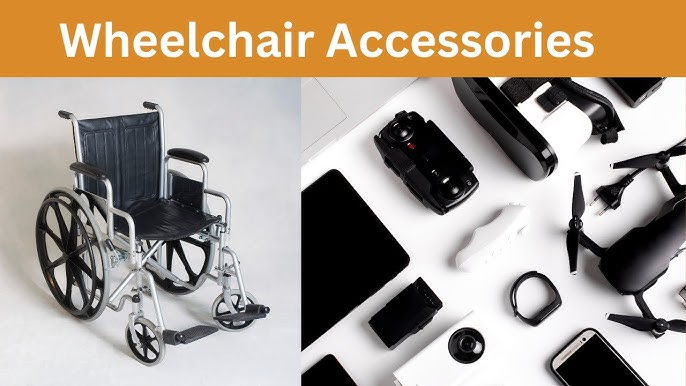The Latest Advances in Eye Care Technology
- Kate Westall
- Jun 4
- 6 min read
Wondering how cutting-edge innovations can safeguard your vision for years to come? If you’re navigating the bustling streets near Wynyard Station or balancing screen-heavy workdays, modern eye care breakthroughs offer tangible solutions. From AI-driven diagnostics to precision laser treatments and telemedicine, these advances deliver clearer outcomes for Australians. Whether you’re managing myopia, cataracts, or digital eye strain, this guide unpacks the technologies reshaping eye health—ensuring you make informed decisions to protect your sight.

Key Advances in Diagnostic Tools
Early detection is the cornerstone of effective eye care. Today’s diagnostic tools combine precision imaging with artificial intelligence to spot issues long before symptoms arise. For busy professionals around Wynyard Station—where screen time and urban environmental factors strain vision—these innovations offer proactive protection.
State-of-the-Art Imaging Systems
Optical coherence tomography (OCT) revolutionizes retinal scans by using light waves to create cross-sectional views of the eye’s inner layers. Unlike traditional methods, OCT detects microscopic changes in the retina or optic nerve, flagging early signs of glaucoma or macular degeneration during routine check-ups. Similarly, advanced fundus cameras capture high-resolution images of the retina, revealing subtle abnormalities like micro-tears or diabetic retinopathy. These tools empower specialists to craft personalized treatment plans, combining accuracy with efficiency—a critical advantage for time-pressed Sydneysiders.
AI-Powered Screening: What Does It Mean for Patients?
Artificial intelligence transforms eye screenings by analyzing thousands of scans in minutes. Algorithms trained on global datasets identify patterns invisible to the human eye, such as faint hemorrhages or early-stage nerve damage. For patients near Wynyard Station, this means faster results and reduced diagnostic errors. AI doesn’t replace specialists; it enhances their expertise. Clinics equipped with these systems provide detailed risk assessments during lunch-hour appointments, making advanced care accessible without disrupting busy schedules.
How Do Eye Scans Help Detect Conditions Early?
Eye scans do more than assess vision—they uncover systemic health issues. Diabetic retinopathy, often first spotted through retinal imaging, signals broader metabolic concerns. Hypertension, too, can manifest in ocular blood vessels. Regular scans build a digital health timeline, allowing optometrists to track subtle changes year-over-year. Early intervention, guided by this data, can halt conditions like glaucoma before irreversible damage occurs. For office workers in Sydney’s CBD, where prolonged screen use accelerates eye strain, these scans are a frontline defense.
Innovations in Treatment
Diagnostic tools set the stage, but treatment breakthroughs deliver life-changing results. From non-invasive therapies to smart implants, options today are safer, faster, and more tailored than ever.
Laser Eye Surgery: Is It Always the Best Option?
Procedures like LASIK or SMILE correct myopia and astigmatism by reshaping the cornea with ultra-precise lasers. While popular, they’re not universal fixes. Suitability hinges on corneal thickness, prescription stability, and lifestyle. A construction worker near Wynyard Station, for instance, might risk corneal instability from physical labor, making lens implants safer. Side effects like dry eyes also warrant caution. Consultations now include 3D corneal mapping to predict outcomes, ensuring only ideal candidates proceed.
Smart Lenses and Implants: Are They Right for You?
Next-gen intraocular lenses (IOLs) do far more than replace cloudy cataracts. Multifocal IOLs correct near and distance vision simultaneously, while light-adjustable lenses allow post-surgical tweaks via UV light. For professionals in Wynyard’s financial district, this could mean dreading reading glasses during back-to-back meetings. Yet, costs remain steep ($4,000–$6,000 per eye), and not all clinics offer the latest models. Always verify a provider’s expertise with these technologies before committing.
Non-Invasive Procedures for Common Eye Conditions
Keratoconus, once requiring transplants, is now managed with corneal cross-linking—a painless treatment combining riboflavin drops and UV light to strengthen thinning tissue. Similarly, intense pulsed light (IPL) therapy alleviates chronic dry eye by unblocking meibomian glands. These in-office procedures take under 30 minutes, with minimal downtime. For CBD workers, lunchtime sessions fit seamlessly into hectic days. Emerging options like neuroprotective eye drops for glaucoma also promise to slow degeneration without surgery.
Telemedicine and Digital Eye Care in Australia
Accessibility defines modern eye care. Telehealth bridges gaps for rural Australians, but urban centers like Sydney reap unique benefits—especially near transit hubs like Wynyard Station.
Can Online Consultations Replace In-Person Visits?
Virtual appointments handle preliminary assessments, prescription renewals, and post-op follow-ups efficiently. A banker near Wynyard Station could discuss laser surgery options via video during a work break, saving hours. However, physical exams remain essential for complex diagnostics like retinal detachment or advanced glaucoma. Hybrid models now emerge: clinics mail home-test kits (e.g., pressure monitors), with results reviewed online. This synergy of convenience and thoroughness caters perfectly to urban professionals.
How Accessible Are Telehealth Services in Rural Areas?
While government initiatives expand telehealth in remote regions, infrastructure gaps persist. Slow internet limits real-time consultations, and scarce local technicians hinder equipment use. Conversely, Sydney’s CBD clinics leverage high-speed connectivity for seamless telemedicine. At Wynyard Station, practices offer same-day virtual slots, with AI triage systems prioritizing urgent cases. This urban advantage underscores why city dwellers experience fewer delays in care.
Addressing Common Eye Conditions
Understanding prevalent eye issues—and their latest treatments—empowers proactive care. Here’s how technology tackles four major concerns.
Myopia: Are You a Candidate for Laser Correction?
Screen-centric lifestyles fuel myopia’s rise. Laser surgery suits those with stable prescriptions and thick corneas. Alternatives like orthokeratology (overnight reshaping lenses) offer non-surgical solutions. For Wynyard Station commuters exposed to pollution and allergens, however, laser recovery may trump daily lens maintenance.
Cataracts: Do Advanced Lenses Offer Better Results?
Modern IOLs outperform standard mono-focal versions. Extended-depth-of-focus lenses provide clear vision at multiple distances, while toric IOLs correct astigmatism. Surgeons near Wynyard Station increasingly combine cataract removal with refractive correction, turning one procedure into a comprehensive vision overhaul.
Glaucoma: How Early Detection Can Save Your Sight
Silent and progressive, glaucoma demands relentless monitoring. Optical coherence tomography (OCT) now measures retinal nerve fiber thickness to detect loss years before vision fades. For at-risk patients—like those over 50 in high-stress CBD jobs—annual OCT scans are non-negotiable.
Macular Degeneration: What Are the Latest Treatment Options?
Anti-VEGF injections remain gold-standard for wet AMD, but gene therapies loom on the horizon. Implantable microscopes (e.g., Iris Vision) magnify images onto healthy retina areas, aiding late-stage patients. Nutritional genomics also gains traction, with clinics near Wynyard Station offering DNA-based dietary plans to slow dry AMD.
Eye Care for Busy Urban Professionals
Life near Wynyard Station blends opportunity with ocular challenges. Skyscraper glare, prolonged screen exposure, and airborne pollutants accelerate digital eye strain and dry eye syndrome. Blue light-filtering lenses, once a niche product, now feature in 70% of prescriptions for CBD workers. Meanwhile, "corneal rejuvenation" programs—combining IPL therapy, moisture chamber glasses, and anti-inflammatory drops—target screen-induced damage. Prioritizing annual advanced scans catches urban-specific risks early, from pollution-linked inflammation to stress-triggered optic nerve issues.
Choosing an Eye Care Provider Near Wynyard Station
Selecting the right clinic hinges on three factors:
Technology Access: Ensure they offer OCT, AI analytics, and the latest IOLs. Avoid practices reliant on outdated equipment.
Specialist Expertise: Optometrists should hold certifications in therapeutic prescribing and myopia management. For surgical consults, verify the surgeon’s complication rates.
Preventive Focus: Top providers create multi-year vision preservation plans, not just reactive fixes. Clinics near Wynyard Station often include occupational eye health assessments tailored to desk workers.
Top Questions About Eye Care Technology
What Are the Newest Breakthroughs?
Gene therapy trials target inherited conditions like retinitis pigmentosa, potentially restoring lost vision. Nanotechnology-enabled drug delivery (e.g., sustained-release glaucoma implants) reduces treatment frequency. At-home OCT devices, though nascent, may soon enable remote retina monitoring.
Are Advanced Contact Lenses Safe?
Sensors embedded in lenses track glucose or intraocular pressure, but hygiene remains paramount. Daily disposables minimize infection risks, while silicone hydrogel materials boost oxygen flow. Always undergo a professional fitting—improper lens curvature can scar corneas.
Can Technology Prevent Vision Deterioration?
Absolutely. AI predicts personal risk trajectories (e.g., "20% glaucoma likelihood in 5 years"), guiding preemptive care. Myopia-control glasses with peripheral defocus lenses slow childhood nearsightedness by 60%. Lifestyle tech, like apps enforcing the 20-20 rule (20-second screen breaks every 20 minutes), combats digital strain.
What Costs Can Australians Expect?
Laser surgery: $2,500–$4,500/eye
Advanced IOLs: $3,000–$6,000/eye
OCT Scans: Bulk-billed to $150 privately
Private health funds often cover 15–25% of major procedures. Many CBD clinics offer payment plans for upfront costs.
The Future of Eye Care: What’s Next?
Next-generation advancements focus on accessibility and precision. Telemedicine platforms will integrate AI diagnostics with real-time specialist collaborations, making expert second opinions instant. For Wynyard Station workers, "pop-up" optometry kiosks could offer OCT scans during commutes. Bioprinting research aims to create artificial corneas, potentially ending donor shortages. Meanwhile, Australia’s NDIS reforms promise broader subsidies for vision-saving tech, ensuring cutting-edge care reaches all demographics.
Conclusion
Eye care technology isn’t a distant promise—it’s actively protecting vision across Sydney, especially for those near Wynyard Station facing unique urban stressors. From AI-driven early warnings to non-invasive treatments fitting lunch breaks, these advances make proactive care achievable. Prioritize clinics with the latest diagnostic tools, ask about tailored prevention plans, and leverage telehealth for efficiency. Your sight is irreplaceable; modern technology ensures it stays sharp amid hectic city life. Consult a local specialist to explore which innovations align with your needs, and take the first step toward lifelong visual clarity.









Comments